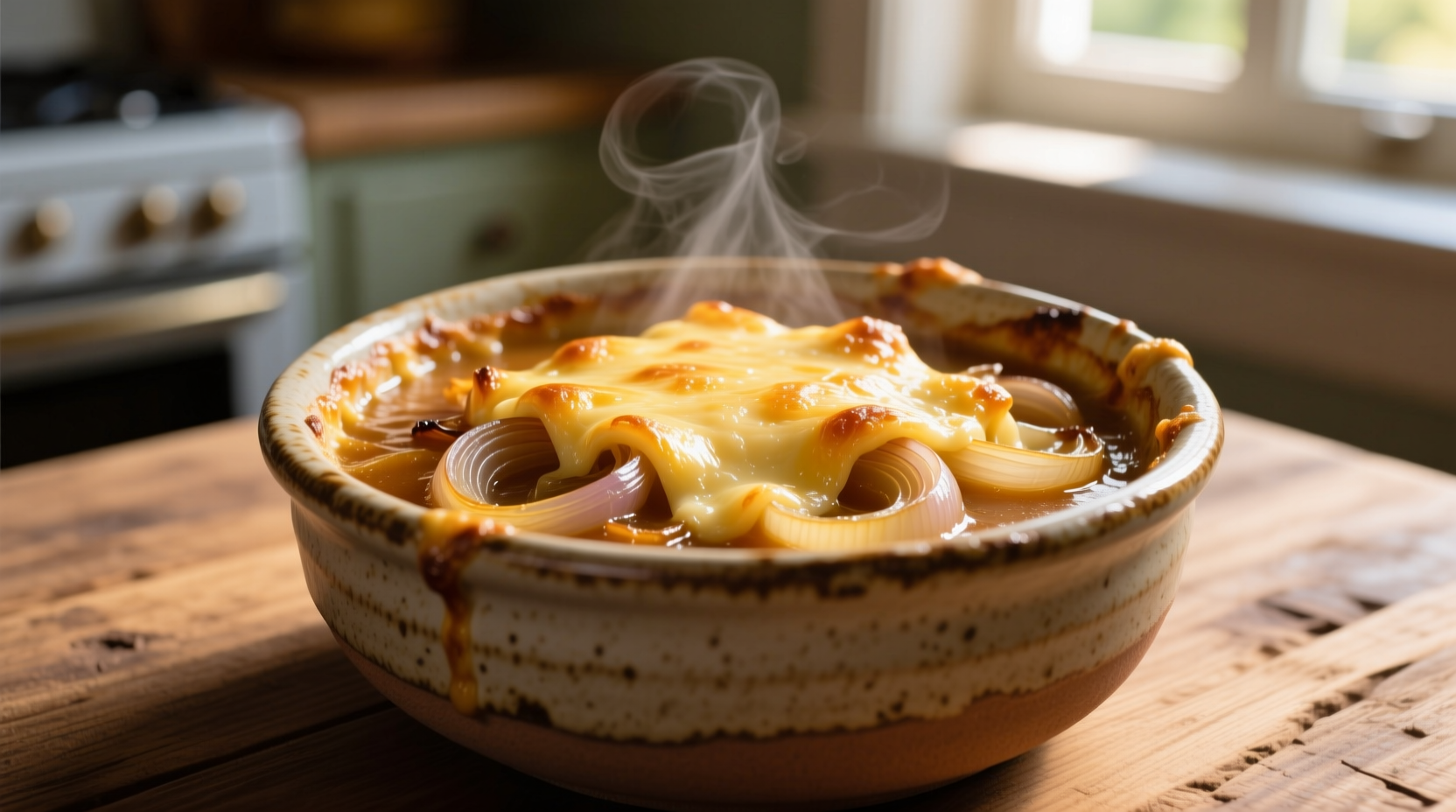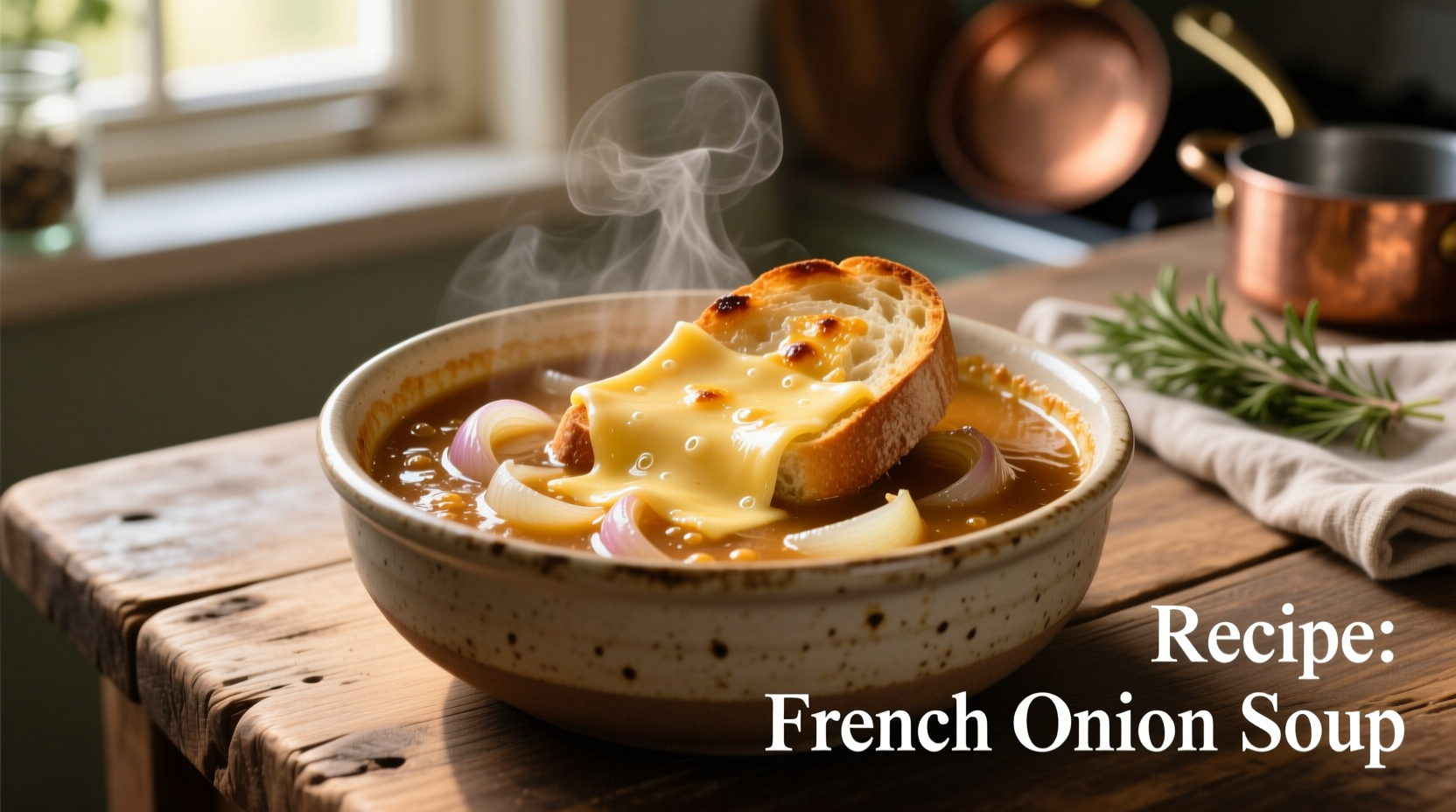Nothing compares to a steaming bowl of French onion soup with its sweet-savory broth, tender caramelized onions, and golden cheese crust. While many versions exist, the authentic preparation requires patience with the onions and attention to broth quality. This guide reveals the precise techniques that transform simple ingredients into a culinary masterpiece.
The Evolution of French Onion Soup
French onion soup dates back to ancient Rome, where it was considered peasant food. The modern version emerged in 18th century Paris, becoming popular among night workers due to its affordability and heartiness. By the 19th century, it had evolved into the refined dish we know today, featuring beef broth and melted cheese topping. The recipe gained international fame after appearing in Julia Child's Mastering the Art of French Cooking in 1961, introducing proper caramelization techniques to home cooks worldwide.
Essential Ingredients and Substitutions
Understanding your ingredients makes all the difference. The quality of your onions and broth directly impacts the final flavor profile. Here's what you need to know:
| Onion Type | Sweetness Level | Caramelization Time | Best For |
|---|---|---|---|
| Yellow Onions | Medium | 40-50 minutes | Traditional depth of flavor |
| Shallots | High | 30-40 minutes | Delicate, sweet variations |
| Red Onions | Medium-High | 35-45 minutes | Vibrant color, slightly sharper taste |
| White Onions | Low | 45-55 minutes | Traditional French preparation |
According to culinary research from the Institute of Food Technologists, the key to perfect caramelization is maintaining a consistent medium-low heat (275-300°F) for 40-50 minutes. Rushing this process creates bitter flavors instead of the desired sweet complexity.

Step-by-Step Preparation Guide
Ingredient Preparation (15 minutes)
- 4 lbs (1.8 kg) yellow onions, thinly sliced (about 8 medium onions)
- 4 tbsp unsalted butter
- 1 tbsp olive oil
- 1 cup dry white wine (optional but recommended)
- 6 cups high-quality beef broth (preferably homemade or low-sodium)
- 1 tbsp all-purpose flour
- 2 cloves garlic, minced
- 1 tsp fresh thyme leaves
- 1 bay leaf
- Salt and freshly ground black pepper to taste
- 1 baguette, sliced
- 1.5 cups grated Gruyère cheese
Caramelizing the Onions (45-50 minutes)
- Melt butter with olive oil in a heavy-bottomed pot over medium heat
- Add onions and stir to coat with fat
- Reduce heat to medium-low and cook slowly, stirring every 5-7 minutes
- After 20 minutes, onions will release liquid - continue cooking until evaporated
- Continue cooking until onions turn deep golden brown (not burnt)
- Add garlic and thyme during the last 5 minutes of caramelization
Building the Broth (20 minutes)
- Sprinkle flour over onions and cook for 2 minutes to eliminate raw flour taste
- Pour in wine to deglaze the pot, scraping up any browned bits
- Add broth, bay leaf, salt, and pepper
- Simmer uncovered for 15-20 minutes to develop flavors
- Remove bay leaf before serving
Critical Success Factors and Common Mistakes
Professional chefs emphasize several context boundaries that determine success:
- Heat control is non-negotiable - High heat burns onions instead of caramelizing them. The Maillard reaction requires patience at medium-low temperatures.
- Broth quality makes or breaks the dish - As noted by the American Test Kitchen, store-bought broths often lack depth. Enhance with a splash of soy sauce or Worcestershire for umami.
- Cheese selection matters - Gruyère provides the ideal melt and nutty flavor. Avoid pre-shredded cheese which contains anti-caking agents that prevent proper melting.
- Broiler technique is crucial - Position racks correctly (4-6 inches from heat source) and watch constantly to prevent burning.
Variations for Different Dietary Needs
While traditional French onion soup uses beef broth, several authentic variations exist:
- Vegetarian version: Use mushroom or vegetable broth with 1 tbsp soy sauce for umami depth
- Gluten-free option: Omit flour or use cornstarch slurry (1 tbsp cornstarch + 2 tbsp cold water)
- Dairy-free alternative: Substitute Gruyère with nutritional yeast and vegan cheese alternatives
- Quick version: Use 1 tsp onion powder with 3 lbs onions to accelerate flavor development
Serving and Storage Recommendations
For optimal presentation and flavor:
- Ladle soup into oven-safe crocks filled 3/4 full
- Top with 2-3 baguette slices and generous cheese coverage
- Broach under high heat until cheese bubbles and browns (3-5 minutes)
- Rest 2-3 minutes before serving (the soup continues cooking)
Properly stored in airtight containers, French onion soup maintains quality for 3-4 days in the refrigerator or up to 3 months frozen. When reheating, add a splash of broth to restore consistency as the onions absorb liquid during storage.











 浙公网安备
33010002000092号
浙公网安备
33010002000092号 浙B2-20120091-4
浙B2-20120091-4